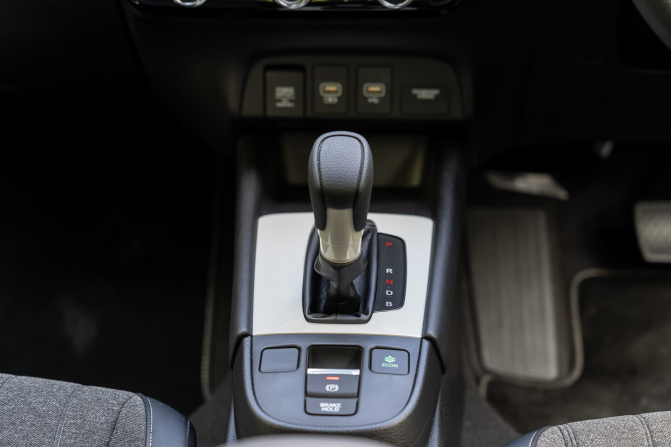The transmission is probably the second most complex piece of engineering in a car after the engine. But how do they work? What are the parts of automatic transmission? We’ll talk you through the components inside an automatic transmission in this post. We’ll also explain what it does, how it works, and everything else you need to know about it!
What Does A Transmission Do?
Whether you have a manual or automatic transmission in your car, they do the same job: they convert rotational energy from the crankshaft in the engine into torque. It then transmits this torque onto the driven wheels via the driveshaft, hence why it’s called a transmission. Okay, but why are they important?
Well, it’s because internal combustion engines need to build up their torque throughout the RPM range. If they were to transfer power directly to the wheels, this would be greatly inefficient. The acceleration would be slow, and fuel consumption would be horrible. A transmission can regulate the power from your engine, making power delivery to the wheels more efficient.
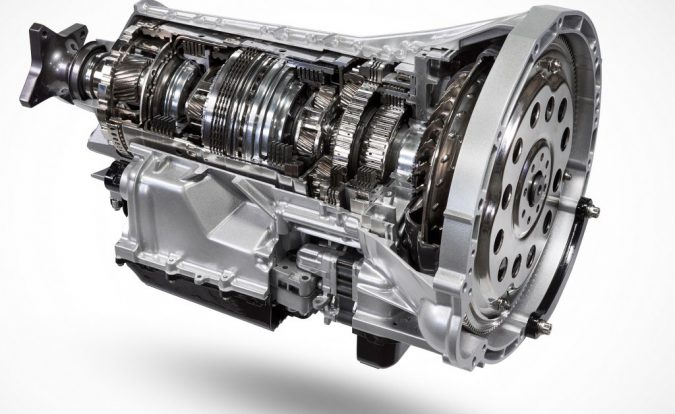
Additionally, the multiple gear ratios allow the cars to reach higher speeds as well. Internal combustion engines have a limited RPM range, usually, it tops out around 6,000 to 7,000 rpm for most cars. And if they were to drive the wheels directly, they won’t be able to reach high speeds due to this limited RPM.
To summarize, the transmission is there to transfer power from the engine onto the driven wheels. With multiple gear ratios, it can moderate the power from the engine, which makes acceleration faster, giving the car a higher top speed, all while making it more fuel-efficient.
Types Of Automatic Transmissions
When we say automatic transmission, we’re referring to the conventional automatic transmission with a torque converter, and that’s what we will focus on in this post. However, there are a couple more types of “automatic” transmissions. They work differently from a conventional automatic, but gear changes are done automatically by the computer, hence why we can consider them as automatic transmissions as well.
Anyway, we won’t delve too much into them. But here are the other types of “automatic” transmission you should know other than the conventional automatic:
Continuously Variable Transmission (CVT)
You might have heard of CVT, as it’s quite common in Japanese cars. Unlike other transmissions, CVT doesn’t use gears in them. Instead, it uses two pulleys and a steel belt to control the power output onto the driven wheels.
These pulleys will continuously adjust in size, which affects the power output onto the wheels and hence why they’re called a Continuously Variable Transmission as the pulleys continuously adjust depending on a few factors. How does it work? First, there’s a drive pulley that receives power from the engine. It will spin and drive the driven pulley via the steel belt, which then transfers power to the different wheels.
When the CVT is in “low gear”, the drive pulley narrows, and the driven pulley widens. This lowers the rotation speed of the driven pulley, which allows for more low-end power, mimicking a low gear ratio.
As the car accelerates, the CVT will engage “high gear”. During this state, the drive pulley will widen, and the driven pulley narrows down. This allows for a higher rotational speed on the driven pulley, which allows the wheels to spin faster. Watch this video to learn more about how CVTs work:
Because CVTs don’t actually change gear, it allows for smoother power delivery. However, CVTs are more expensive to manufacture, leading to high repair costs. You’ll find CVT is quite common in Honda and Nissan cars.
Automated Manuals And Dual-Clutch Transmission
Another type of automatic transmission is the automated manual. As the name suggests, this type of transmission is closely based on the mechanical design of a typical manual transmission. However, it uses automatic actuation to operate the clutch and often the gear change mechanism as well. So, there’s no pedal clutch in a car that uses automated manuals.
In the early days, automated manuals use a single-clutch system and the driver will often still have to change the gear themself by using either a gear lever or paddle shifters on the steering wheel. Additionally, the single-clutch automated manuals often have rough gear changes. This is where dual-clutch transmissions (DCT) come in.
The dual-clutch transmission is basically a variation of the automated manual. The difference is that they have two clutches: one for the odd gears, one for the even gears. When one gear is engaged, the other clutch will engage the next gear which allows for smoother gear changes, faster acceleration, and better fuel efficiency.
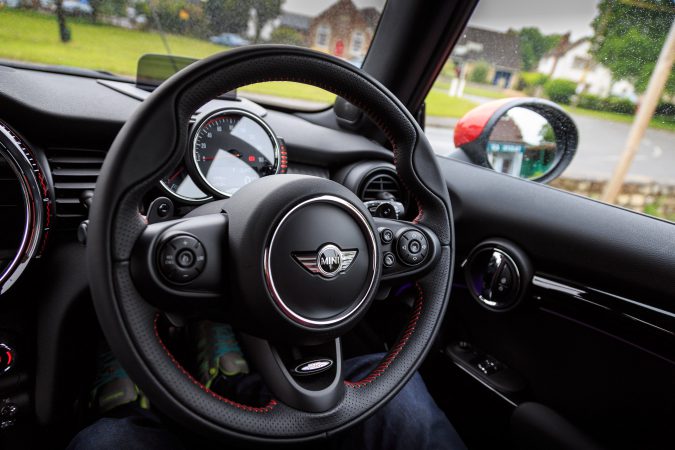
Also, older automated manuals rely on RPM presets in their programming to know when to change gears. Modern DCT systems can process more information, making it more intelligent in knowing when to change gear and what gear to engage.
All this means that DCTs operate just like an automatic: drivers don’t have to use a clutch pedal and gear changes are done automatically. You’ll typically find DCTs in VW cars (they refer to it as DSG), Porsches, and even certain models of the MINI Cooper.
Parts Of Automatic Transmission
Right, that’s how those other types of “automatic” transmission work. But you’re here to learn about the parts of an automatic transmission, specifically the conventional automatic with a torque converter. Well, without further ado, here are the parts you’ll find inside an automatic transmission:
Planetary Gear Sets
First, the gears. Unlike a manual transmission where the gears move and slide according to the driver’s input, an automatic uses something called a planetary gear set instead. Here’s what the planetary gear set consists of:
- The ring gear is the outside gear with teeth inside of the gear rather than outside of it. It houses the rest of the planetary gear set.
- A sun gear, a large gear that sits at the center of the planetary gear set.
- Planetary gears. A planetary gear set typically has two or more planet gears surrounding the sun gear, and they’re mounted to the planetary carrier.
A car has more than one planetary gear set to achieve different gear ratios. The gears will spin in various ways, depending on the car’s condition and the driver’s demands. The way it spins will determine the power output from the transmission.
For example, at lower speeds, the ring gear becomes the input gear and it spins while the sun gear remains stationary. As a result, the planet gears will spin along with the ring gear and the carrier moves along in the same direction. In this scenario, the carrier is the output gear. This usually happens when the car is accelerating from a dead stop.
Can’t make heads or tails of it? The video above may help you understand more about planetary gear sets. But to summarize, the planetary gear sets will spin in different ways to power the wheels. The way they spin lets them achieve different speeds and power output.
Depending on the scenario, the sun gear, the planetary carrier, and the ring gear can either become an input gear (receives power) or an output gear (transfers power). It all depends on what speed your car is going and your input.
Torque Converter
Don’t worry, the planetary gear sets are the most confusing part. After it, everything else is going to sound childishly simple. Anyway, in a manual transmission, the clutch’s job is to connect or disconnect the transmission from the engine. This allows the car to remain stationary while the engine is running, or for the driver to change gears. In an automatic, this job is done by the torque converter.
It works by using the transmission fluid, and here are the components inside the torque converter:
- Pump or impeller, which bolts directly to the flywheel and it pumps transmission fluid.
- A turbine, this part spins according to how much transmission fluid is sent from the pump.
- Stator or reactor, a fan-like device that sits between the pump and turbine. It sends transmission fluid back to the pump and multiplies the amount of torque coming from the engine.
- Torque converter clutch which is connected to the turbine. This clutch can engage which causes the turbine to spin at the same speed as the pump, making the turbine more efficient at speeds above 45mph.
But how does it all work? Simply put, when you rev the engine, the pump will spin which pumps transmission fluid into the turbine. The turbine then sends torque to the transmission, which causes it to spin the gears and drive the wheels. As mentioned, the stator and torque converter clutch are there to make the operation more efficient, especially at higher speeds.
Okay, so maybe it’s not as simple as we first mentioned it would be. But it’s still a lot simpler than planetary gear sets. To summarize, the turbine is powered by transmission fluid, which then powers the transmission.
Clutch Packs
Automatic transmissions also have clutches, but they serve a slightly different purpose. Additionally, there are several of them rather than just one and they are compressed together, hence why they’re called a clutch pack. Their job is to engage different gear ratios.
How does it work? A valve body will send oil to pressure the clutch pack. Afterward, it will lock a certain number of clutch packs together, depending on the scenario. For example, when you’re going fast, you’ll need a higher gear ratio. The transmission will send the necessary amount of fluid/oil pressure to lock the appropriate number of clutch packs.
This will then engage the clutch and give you the necessary gear ratio. To be more specific, engaging different clutch packs will affect different parts of the planetary gear set. It determines which parts of the gear set will spin, and which parts will be stationary. In turn, this affects the gear ratio that you get from the transmission.
Oil Pump And Solenoid
Of course, since certain parts of the transmission need oil to operate, such as the clutch pack, it will need an oil pump. Its job is exactly what it sounds like: to pump oil throughout the transmission wherever necessary. Meanwhile, the solenoid is an electromechanical device that controls the flow of oil and fluid in the transmission.
Brake Bands
A brake band works similar to drum brakes that you see in older cars and the rear brakes of some modern cars as well. Anyway, its job is to temporarily hold the planetary gears, which allows the engine RPM to get in line with a gear ratio. This results in smoother shifting between gears.
Transmission Control Module
Of course, none of this would work without a computer that tells the transmission what to do at any given time. Older cars have much simpler modules, which activate different actuators on a set of pre-determined parameters. For example, in older cars, the automatic transmission will shift up when you reach a certain RPM and maybe depending on throttle input as well.
But in modern cars, the Transmission Control Module or TCM is much more complex and smarter. It’s basically a computer that tells the transmission what gear to engage in at any given moment. It chooses the gears depending on throttle input, RPM, wheel speed, traction control, brake input, and many more sensors.
Additionally, TCMs in modern cars are often integrated with the Powertrain Control Module (PCM). This means the processing is done by the PCM, with inputs from the Engine Control Unit (ECU) as well. This makes the TCM smarter in selecting which gear may be appropriate for any given moment and considers the engine’s conditions. It may even put the transmission in limp mode if it detects any damage.
Parts Of Automatic Transmission: How It Works
So, those are the components that make up the automatic transmission. Here’s how they work together:
- The engine sends power to the torque converter via the crankshaft, and then the flywheel.
- The pump inside the torque converter then pumps transmission fluid, which causes the turbine to spin.
- A stator inside the torque converter sends back the transmission fluid to the pump and helps to control and multiply the torque the turbine creates.
- When the turbine spins, it will spin a shaft that sends power to the planetary gear set inside the automatic transmission.
- The clutch packs will engage, depending on the gearbox oil pressure which is controlled by the solenoid and the Transmission Control Module.
- The clutch pack determines the movement of the planetary gear sets. This determines the gear ratio that the transmission is using, and multiple gear ratios are necessary for a variety of driving conditions.
- As mentioned, the movement of the planetary gear sets determines the gear ratio. This in turn determines the amount of torque and power that’s sent to the driven wheels via the driveshaft.
Confused? Don’t worry, as mentioned, the transmission is a very complex piece of machinery, and not everyone can fully understand how it works. Especially those dreaded planetary gear sets. But hopefully, this gives you an idea of how complex it is, and why repairing a broken transmission is very expensive.
Parts Of Automatic Transmission: Questions & Answers
Got any more questions about automatic transmissions? Don’t worry, we’ll try to answer your questions below:
How Long Do Automatic Transmissions Last?
It depends on your car’s make and model, as well as how you use and maintain your transmission. For this reason, you can’t determine how long a transmission will last. But expect your transmission to last anywhere between 100,000 to 150,000 miles before major components start breaking down.
How Much Does It Cost To Repair A Transmission?
This will depend on what you need to repair in the transmission. For example, a faulty solenoid will cost somewhere between $150 – $400 to replace including labor. Meanwhile, the transmission also has a pan to store its fluids when not in use. The gasket that seals this pan will harden and crack over time, leading to leaks. This will cost somewhere around $350 to replace.
But what if your transmission suffers major internal damage? When the gears and other internal components are worn out, you will need a transmission rebuild. As we’ve learned, the transmission is incredibly complex, and rebuilding or replacing it with a new one will obviously be very expensive.
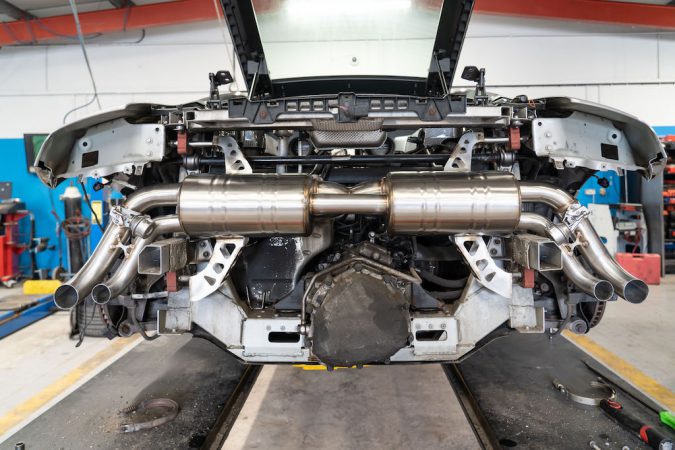
When your transmission goes bad, you can either rebuild it with new spare parts or replace it with an entirely new unit. Either way, this will cost you somewhere around $1,500 – $4,500 depending on your car’s make and model. And of course, some cars will cost much higher than that.
There are cheaper options, such as buying a used or remanufactured transmission, which can cost below $1,500. But there’s no guarantee that they will last as long as a rebuild or new transmission. AAMCO is one of the best places to go for rebuilding transmissions in the US, and you can learn more about transmission rebuild costs here.
Parts Of Automatic Transmission: How Do I Maintain It?
Since transmission repairs and rebuilds are ridiculously expensive, here are some transmission maintenance tips to avoid those scary repair bills:
- Do not neglect regular maintenance. Change the transmission fluid at the recommended intervals to keep it well-lubricated. Check your owner’s manual to find out which fluid you should use, and don’t fill it with too much fluid.
- In an automatic transmission, make sure the car stops completely before engaging another gear. For example, if you were in Reverse as you pull out of your driveway, press the brake and make sure the car stop completely before engaging Drive. This ensures that the gears won’t grind, avoiding unnecessary damage.
- Avoid driving with space saver spare tires for an extended period (and make sure you’re wary of how far can you drive on a spare tire). They’re much narrower, and uneven tire width can put additional stress on the transmission. Additionally, don’t drive with mismatched tires.
- Keep towing to a minimum. Towing heavy loads will also put stress on the transmission, and frequently doing so can wear it out much quicker. If you have to tow, make sure the load isn’t heavier than the manufacturer’s maximum tow rating.
- If you need to tow your car, do not let the driven wheels roll on the ground. The driven wheels are the wheels that are driven by the transmission. This can either be the front, rear, or all four wheels. Doing so can damage the transmission. You need to tow your car correctly. Ideally, all four wheels should be up on the tow truck.
Which Type Of Automatic Transmission Is Best?
As mentioned, there are several types of “automatic” transmission: conventional ones with a torque converter, CVTs, and automated manuals or dual-clutch transmissions. You might be wondering, which one’s the best? Which one should you consider the next time you buy a car?
Here’s the thing, most people – including you – wouldn’t even notice the difference. If you’re not a keen driver, you’re not going to notice and a standard conventional automatic is probably your best choice since they’re well-rounded and are usually the cheapest to repair. Not to mention, they tend to be more durable than automated manuals.
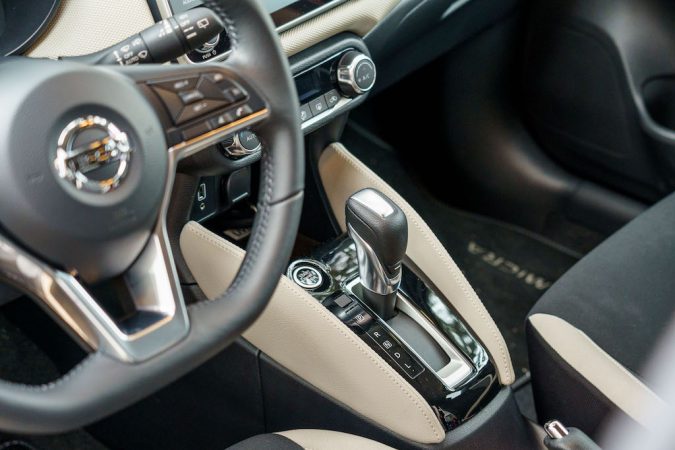
CVTs offer smoother power delivery, as there isn’t any actual gear change. However, they’re not as fun as other transmissions if you’re a keen driver. Additionally, speaking from experience, they work best with larger engines and higher power output. Small engines with small power output typically feel even more sluggish with CVTs. And of course, it will be expensive to fix.
Meanwhile, automated manuals and DCTs are great. But chances are, you’re not going to notice how good they are and only performance cars will really benefit from them. Not to mention, they can be quite expensive to repair, and certain DCTs are prone to excess wear and tear in stop-start driving conditions.
Do Electric Cars Have A Transmission?
No, they don’t. At least, not in the same form as the transmissions that we’re familiar with. This is because electric motors have a much higher RPM range, often reaching 17,000 RPM. This means they are capable of reaching high-top speeds even without the help of a transmission. And because they provide instant torque right from the start, they do not need a transmission with a low gear ratio to make acceleration fast and efficient.
Automatic Transmission: Facts You Need to Know
- Most automobiles use a hydraulic planetary automatic transmission which replaces the friction clutch with fluid coupling, and it defines gear ranges depending on the needs of the car.
- Automated manual transmission (AMT) is a less common option that combines clutches and gears of manual transmission with sensors, processors, and pneumatics to provide the affordability and fuel-saving benefits of manual transmission.
- General Motors and REO introduced semi-automatic vehicle transmissions in 1934, with GM being the first to use hydraulically controlled planetary gearbox.
- Automatic transmissions use hydraulic power to shift gears, combining a torque or fluid coupling converter with gearsets that provide desired gear range and lets the car come to a stop without stalling.
- Hydraulic control is used in automatic transmissions where transmission fluid is pressurized by an oil pump to change speed depending on vehicle’s speed and other factors.
- The planetary gear train is a mechanical system where gears are connected with a set of bands and clutches to transmit torque from the engine and increase or decrease gears.
- When shifting into drive, all available forward gear ratios are engaged, and 6-speed automatic transmissions are the most common.
- Second gear is ideal for uphill and downhill in slippery conditions, while third gear provides power and traction needed for towing or driving during inclement weather.
- The biggest advantage of an automatic transmission is the ability to drive without the need for a clutch, making it accessible for people with disabilities and allowing drivers to focus more on driving.
- Automatic transmissions create idle creep, which encourages the vehicle to move forward even when idling, making it easier to control at low speeds.
Parts Of Automatic Transmission: Wrap Up
The automatic transmissions consist of the torque converter, planetary gear sets, clutch packs, oil pump and solenoid, brake bands, and the Transmission Control Module. All these components work together to create a convenient automatic transmission where the driver doesn’t need to change gears or even press a clutch pedal.
That of course is just the conventional automatic. There are other types as well such as the Continuously Variable Transmission (CVT), and dual-clutch transmission (DCT). Hopefully, this article has helped you to understand more about automatic transmission, and now you can appreciate the engineering that goes behind it.

